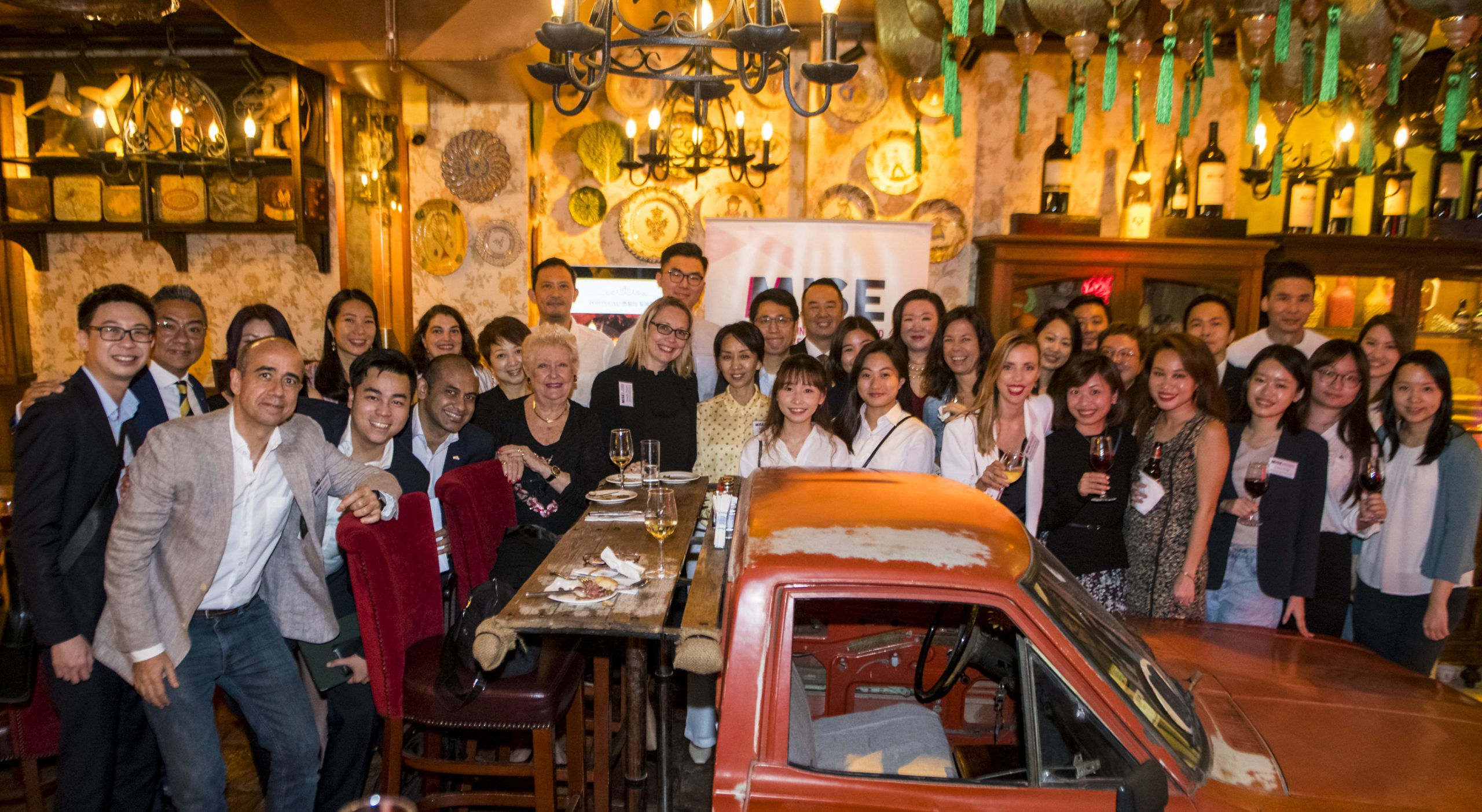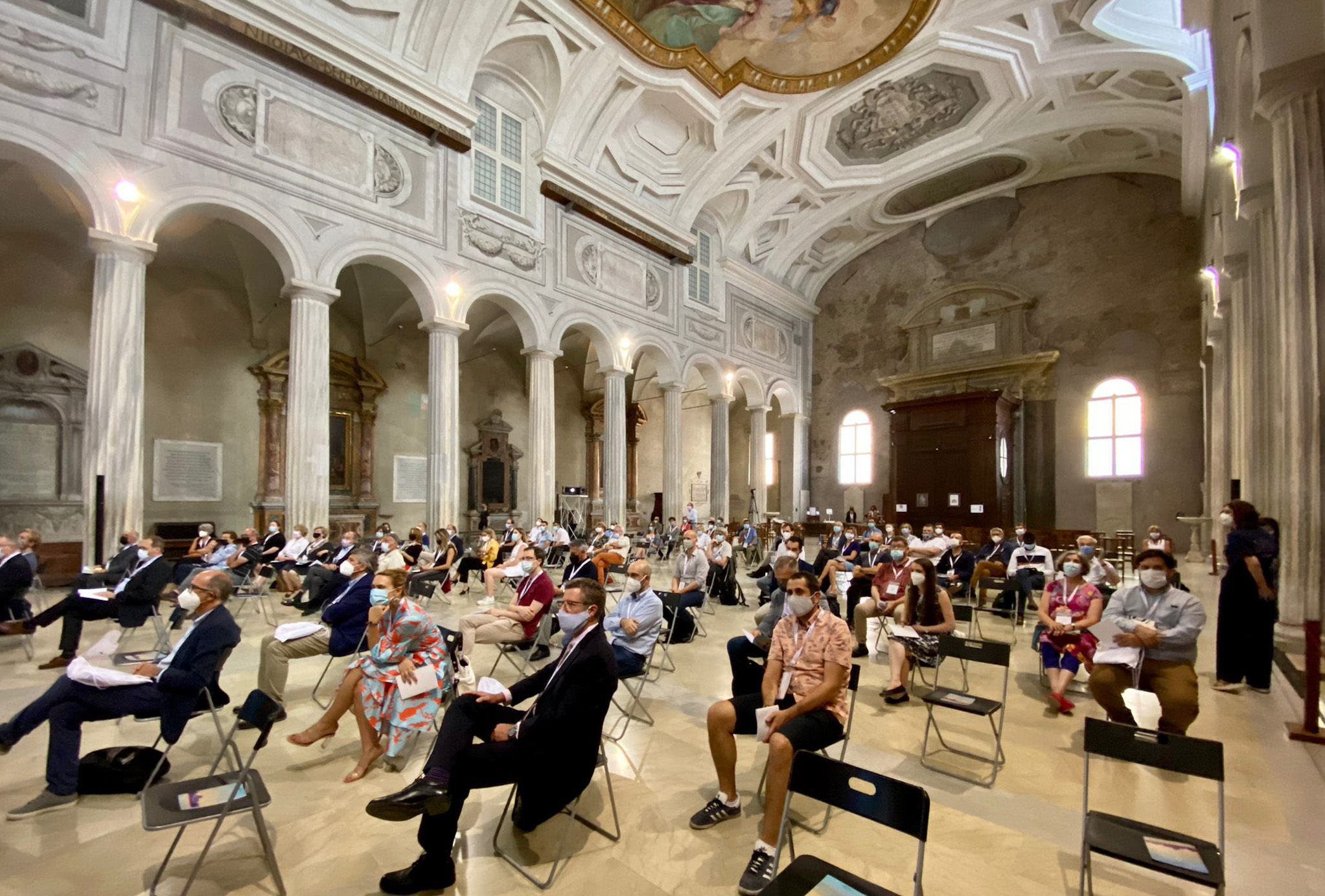Space may be the final frontier – but when it comes to managing events, the frequent challenge is either too little or too much room to manoeuvre.
No matter how carefully event planners measure every nook and cranny of a venue, regardless how precise the CAD software that produces millimetre-perfect floor plans, the “perfect fit” of people and space is a frustratingly elusive objective. This in spite of the long creative hours spent planning the optimisation of width, height and depth.
In these environmentally friendly and financially constrained times, the optimisation of space has become a “top-of-mind” corporate issue. Armies of space-management consultants advise corporations worldwide.
Many companies employ their own “space police” to ensure that work environments are efficient, cost-effective – and leave a reduced carbon footprint. This greater emphasis transfers into the corporate events arena – with clients becoming increasingly rigorous in upholding stringent corporate guidelines regarding space optimisation for meetings and functions.
These evolving forces of change regarding time, space and cost in the global events industry influenced the commissioning of a three-part study, entitled “Convention 2020: The Future of Meetings, Venues and Destinations” by the International Congress and Convention Association (ICCA) together with the IMEX Group and Fast Future Research.

Decade view
This strategic study, due for publication in three phases in 2010 – covering the future of meetings, the live meeting experience and “tomorrow’s convention centre” – aims to “challenge assumptions, develop real insight into what the future may hold, and rethink event designs and business models to help the meetings industry prepare for the decade ahead,” according to ICCA.
The ICCA study will focus on what constitutes an effective meeting design and how live meetings may evolve by 2020. A range of convention venues will be surveyed for the final part of the study, entitled “Tomorrow’s Convention Centre”, which will include case studies on how venues are preparing for the future, including new models for building design and facilities.
Ask any event manager, though, and he will tell you that no survey is needed to define his most familiar space challenge. From Mumbai to Melbourne, Beijing to Bali and Singapore to Seoul, event planners must frequently deal with delegate numbers being changed by the client, often at short notice, before a function takes place. The result is that the approved venue may either be too large or too small to meet the carefully planned brief – and a rapid rethink is required to devise a solution that meets the client’s approval and demonstrates a flexibility and creativity in space utilisation.
This was the case for a recent evening function managed by CiEvents, which has offices in Auckland, Sydney, Melbourne, Brisbane, London, Shanghai and Hong Kong. CiEvents was contracted to manage a high-end 500-person cocktail event for a leading finance and media services company to be held in Hong Kong. Delegates would arrive from around the world for a global meeting, with selected delegates invited to attend an exclusive cocktail party.

Creative Zones
The brief was for an intimate cocktail function with a view over Hong Kong. “The venue chosen provided a great view over Hong Kong’s Victoria Harbour. But the numbers were reduced to 150 a week out from the event when final registrations had been received, so the venue was now too big to ensure an intimate evening for our attendees,” says Tracey Edwards, general manager of CiEvents Asia.
Some creative restructuring of the space was required. The solution for delivering the required “intimate experience” was to establish three zones within the venue, thus creating different sized spaces for socialising, dining and entertainment. This was done without jeopardising the high-end nature of the event, and provided a flow of movement through the venue. Crucially, the re-spacing also incorporated different ways to showcase the client’s products.
“The first zone facilitated an atypical stand-up welcome function, where cocktails and light canapés were served. Zone two was the largest of the three zones, as we were able to bring product display units and create a gallery-style set-up. This had a bigger visual impact for the delegates, and more substantial canapés were served,” Edwards explains. “Zone three was the ‘fun zone,’ where the delegates could interact with the client’s product range in a fun, learning environment.”
The result was a series of seamlessly linked spaces with each one portraying its own individual function – and ensuring the client’s message was communicated.
Brief Encounter
Shanghai-based HLD Events was required to revise its spacing plan for an event after the attendee numbers changed more than once. Contracted to manage a 10th anniversary party for Swedish company Berg Propulsion, HLD’s brief did not require a view over the city, but did stipulate that the venue should not be a hotel and should be no more than 30 minutes drive from the Shanghai New International Exhibition Centre, where the client’s staff members were participating at an international trade show.
“Originally, 188 guests were expected for the evening event comprising of a pre-dinner cocktails, a sit-down dinner, speeches and live music,” says Stefano Ritella, managing director, HLD Events. “This number subsequently fell to 130 people, but then – at the final contractual cut-off date – it was raised to 196.”
The chosen venue was the west wing of 1933, in Shanghai’s Hongkou district. Built as a slaughterhouse in the 1930s, it features a magnificent art deco façade and sloping concrete bridges criss-crossing the funicular shaped interior. The abattoir and three adjacent buildings underwent renovation and re-opened two years ago as a canal-side creative arts, design, retail, dining and events complex.
For HLD, the spacing challenge was split into two main parts. First, access to the venue required guests to use a single, slow-moving elevator – with a maximum of 30 people per journey. To overcome this, HLD bused in guests in batches of 50 people, enabling a smooth transition into the venue without people having to stand outside in the cold waiting for the elevator.
Seating plans comprised the second challenge. Among the proposed layouts, the client preferred a long-table format, with three rows of dinner tables headed by a stage for the live performances. The stumbling block was the series of outsized interior concrete pillars supporting the ceiling, which were retained from the original structure. Though decorative and dramatic when lit in sequence from the bottom for the event, they disrupted the seating layout.

Table Manners
“We looked at a full range of seating options, including reverting to round tables – but that wouldn’t have worked as some guests would have been sitting with their backs to the stage, making it harder to be visually engaged. Plus the client preferred the long-tables format, as it was more befitting of this striking venue,” Ritella says.
Instead, HLD installed slightly narrower dining tables, with a width of 90cm (30cm for each plate/person and 30cm for central table decorations), which enabled the three table rows to be accommodated without some of the diners having to be separated by the pillars. Flat-bamboo table decorations were used while extra tall menus added a sense of visual drama that averted the eyes from the narrower table surfaces.
The client’s corporate colour is black, so black carpeting and drapes were used throughout to provide a contrast with the raw concrete walls and pillar lighting.
“By adapting the space in this way, we were able to meet our standard of 80cm depth and 60cm width for each person seated at a banquet table, and created enough room for 80 waiters to move freely between the kitchens and the tables,” Ritella says.
“Having 196 people was probably the maximum that the space could accommodate without compromising the quality of the event we wanted to host,” Ritella adds. Contractual clarity, as well as creative flexibility, was also a key factor in overcoming the spacing challenges. “It is important to set out clear lines in a contract, beyond which you will have to switch the concept of an event, depending on the comfort and uniqueness of the space.”
Space Invaders
Even in this era of online meeting and banquet space calculators and pillarless ballrooms, most event venues contain several inhibiting features that invade the creative use of space. Heritage buildings and irregular shaped venues, for example, often come with challenging ceiling beams, vertical columns or recesses. Rooftop terraces must be well lit to signpost floor-standing potted plants, water features and other potential hazards – but not over-lit so that the effect is “dazzling”.
Emergency and fire exits are universal space conundrums, of which floor-planning technicians must take meticulous note. Air conditioning is another ‘hidden’ space invader – no dinner guest or meeting delegate wants to sit for a long period of time under a flow of freezing air.
Dance floor space is a popular component of an all-evening gala event, but how do you apportion space for an activity that only gets going late in the evening, and is essentially “dead space” for the rest of the time?
And don’t forget to provide chaperones to guide speakers and award-winners between the floor and stage. Every event manager can share embarrassing tales of how hidden space invaders – such as uncovered cables, a seated guest’s stray foot or irregular steps – caused a hapless delegate to fall flat on his face in full view of the audience. Ouch.
10 SPACE MUST DOS
l Ensure contracts provide the option to switch a concept and/or venue if the event numbers are reduced/enlarged at short notice.
l Include a final contractual cut-off date for the altering of event numbers.
l Factor in access to/from the space, the speed of moving people in and out is crucial, both under normal and emergency circumstances.
l Engage your supplier to accurately measure every inch of the venue, as floor plans provided by hotels and venue management can be out of date or inaccurate.
l When evaluating if a concept will optimise an unusually proportioned space, seek out other companies who have used the venue for their insights.
l Know your client’s preferences. Do they deal in square metres or square feet – and what configurations have they used for similar previous events?
l For banquets and gala events, apportion adequate space for wait staff, speakers, entertainers and support staff to move freely between guests.
l Take time to evaluate the space practicalities from the eyes of two crucial stakeholders: your client and the guests who will actually interact in the venue.
l Use high-tech lighting from different angles to enhance and dramatise the sense of space.
l Never underestimate the “diva potential” of contracted entertainers. Ensure they have sufficient space for changing costumes and plentiful stage space for performing.


